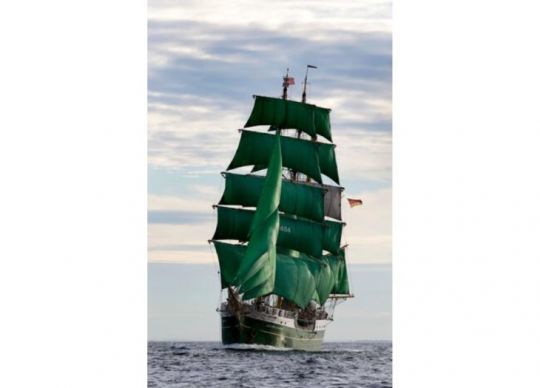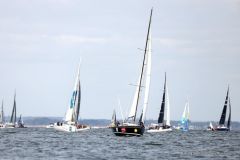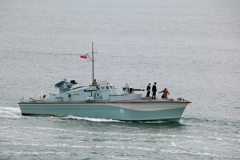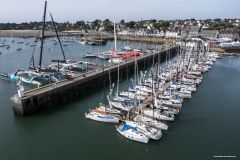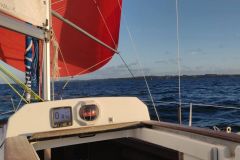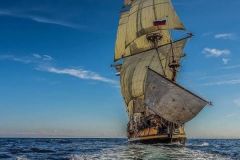After a six-month voyage and a round-trip transatlantic crossing, the Alexander von Humboldt II docked at the Bassin Vauban in Saint-Malo on April 1, 2024. On board, 48 students taking part in a program to discover traditional sailing. This sail training ship provides an opportunity to preserve tradition and nautical values, so that traditional seamanship on tall ships continues to have a future.

Who was the green lady?
The II's predecessor, Alexander von Humboldt I was once a lightship converted into a barque in Bremerhaven, between 1986 and 1988, according to plans by naval architect Zygmunt Chore?. The bottle-green color of the sailboat and its sails played an important role in the advertising image of the 1990s; the boat was named beer ambassador in Bremen. The three-master became the Green Lady, one of the most famous boats in the world at the time. Behind this color palette lies a marketing calculation, namely that of Josef Hattig, then owner of the brewery supplying the sails and later Bremen's Senator for Economic Affairs. Hattig was a great sailboat fan, and turned the green-bottled beer into a global brand.

In 2011, Alexander von Humboldt I was decommissioned due to its age after 25 years of service, and replaced by the new Alexander von Humboldt II, 65.05 m long overall. Also green, she was christened in 2011 in her home port of Bremerhaven, Germany. Alexander von Humboldt II was built with a traditional barque rig. The foremast and mainmast carry square sails, while the aft mizzenmast carries gaff sails. The boat is powered by 24 sails with a total sail area of 1,360 m2. In favorable wind conditions, she can reach speeds of up to 14 knots. Like its predecessor, this boat once again proudly bears the name of the great German naturalist, and also pursues the goal of enthusiastically passing on the experience of traditional seamanship.
Keeping traditional sailing alive
The German non-profit foundation Sail Training (DSST) operates the Alexander von Humboldt II under the German flag as a sail training ship. Its aim is to acquire, manage and maintain suitable boats and landbases in order to offer offshore sailing in the context of traditional seamanship, under the guidance of experts, with special support for young people. The three-masted Alexander von Humboldt II meets today's high legal standards in terms of safety and environmental protection, with state-of-the-art nautical and technical facilities.


How can we preserve nautical tradition and values?
Béa, 17, is studying in Montreal. She has no plans for a career in the boating world, but as part of her teaching program, she had the opportunity 6 months ago to embark on the Alexander von Humboldt II to experience sailing aboard a traditional sailboat. She already knew a little about the world of sailing, but '' no previous experience necessary '', she explains, '' everyone adapts in the end, and we learn a lot every day; even if the beginnings can be impressive when you see all those ropes lined up! We are 48 international students in all, and we usually operate with a permanent experienced crew of 20, plus 6 teachers ''.


After several months on board, Béa is now at ease with all the nautical terms, the use of the cockpit's electronic equipment and the maneuvers required to sail this traditional rig with a crew.


It hasn't always been easy, and she's had a few scares, she tells us, particularly in Biscayne Bay on the Atlantic coast of South Florida, when one of the sails got caught on the yard during a category 3 hurricane. Accompanied by a crew member, Béa mustered up the courage to climb the mast: '' it was a scary moment, but at the same time a very exciting one. I knew that what I was about to do was important for the crew and the boat ''. Other times, there were also a few little niggles, but nothing too serious. '' It's a boat where you feel safe overall; on the other hand, you can't afford to be late for a manoeuvre she stresses.

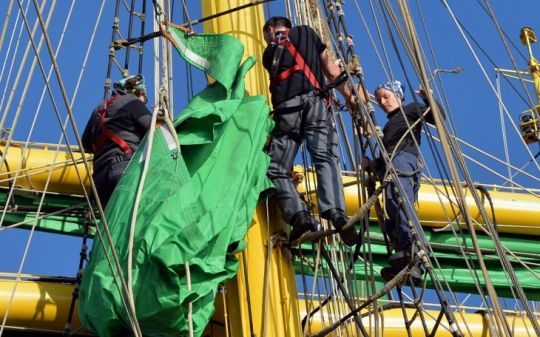
These young people, aged between 16 and 20, have the opportunity to gain totally new experiences in traditional seamanship, connection with nature, community life on board and self-discovery. For Béa, '' in addition to sailing, learning responsibility, teamwork, tolerance and respect come into play ''. It seems that for this reason, Alexander von Humboldt II rightly bears the nickname of Windjammer for the Youth the ''Big sailboat for young people''.
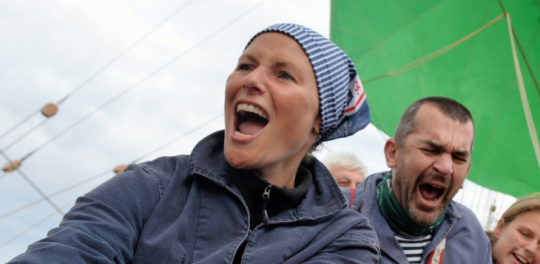
A sailing dream made possible
One of DSST's missions is to enable people of all ages to dream of a sailing adventure. Becoming a crew member and taking on mandatory tasks on board is the idea behind Class Afloat: experience-oriented learning. This implies that content is best understood when it is experienced personally and not just approached intellectually in the classroom. Since its inception in 1984, schoolchildren, students and young people have been offered the chance to broaden their horizons every semester.

Because of the prevailing winds, the route always follows similar patterns: during the 2023/2024 winter season, this led the sailors of the Alexander von Humboldt II to leave Germany to escape the October cold, heading first for the wild Bay of Biscay, before heading south along the Portuguese coast and thus into increasingly warmer weather. '' On the way, we stopped off at various ports s'', Béa explains, '' Porto, Casablanca and the Cape Verde islands were visited before the big leap across the Atlantic! Then came the trip back to Germany. Ports of call included Cuba, Bermuda and, after about two weeks on the Atlantic, the Azores were in sight ''. Now the finish line is just around the corner: a few days' stopover in Saint-Malo, France, and the boats can disembark in Bremerhaven, packed with luggage, experience and adventure.
Due to a revised sailing plan, the boat will not be taking part in the next Tall Ships Race 2024. New direction? Iceland!
